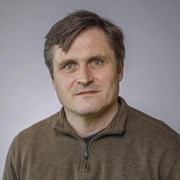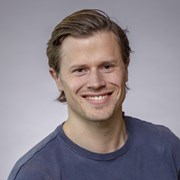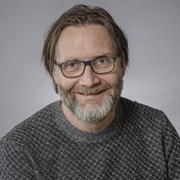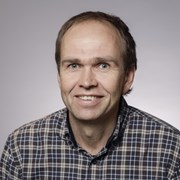Heating and cooling applications constitute more than 40% of national electricity demands. If we can develop means for recovery and large-scale storage of waste heat for later use, this can significantly alleviate the pressure on an electricity grid that is increasingly based on intermittent renewable energy sources.
The underground provides an excellent option for long-time thermal storage that is in principle infinitely scaleable. The last decade has seen a significant increase in the use of geothermal systems for production and seasonal storage of energy. However, current system are limited both in terms of geological constraints and by the ability to meet peak-load energy demand.
Our industrial partner Ruden AS is developing an innovative concept to increase the flexibility of geothermal systems, based on open systems where water is circulated through fractured rock in the subsurface. This provides an effective transfer of energy to or from reservoirs in crystalline rocks. The concept is infinitely scalable and adaptable to meet the needs of any sited, allowing construction of geoenergy systems in areas previously considered impractical.
Understanding the behavior of open, fractured geothermal storage systems can be challenging, as these systems may be influenced by a large number of factors including complex geology, fracture configuration, background groundwater flow and imprecise knowledge of geological parameters. Moreover, the thermal storage systems themselves can be complex, comprising multiple reservoirs with different roles and properties (optimized for high peak-load, high capacity, long-term storage, etc.), many wells and multiple sources and end-users of energy. The ability to properly design and fully exploit such system is therefore a challenging task.
In this project, our goal is to develop a digital platform to optimize management of open-circuit, multi-reservoir geothermal systems, enabling the use of such geothermal systems to meet previously unmet requirements. The work is builds on SINTEF's existing open-source source software MRST to provide numerical simulation and optimization of multi-component geothermal systems. Some key features of the project includes:
- Specification and construction of numerical models of fractured, geothermal reservoirs, and definition of combined systems including multiple reservoirs, wells, heat sources, consumers and losses.
- Combine the use of reservoir simulation and nonlinear optimization to automatically calibrate models to existing operational data, as well as support the specification of optimal strategies for long-time operation of the system.
- Model reduction techniques to allow rapid, simplified simulations.
- A focus on two real projects for geothermal storage, Wesselkvartalet (residential heating) and Skattøra/Kvitebjørn Varme (district heating), are used to guide the development process and provide data for testing and evaluation.




